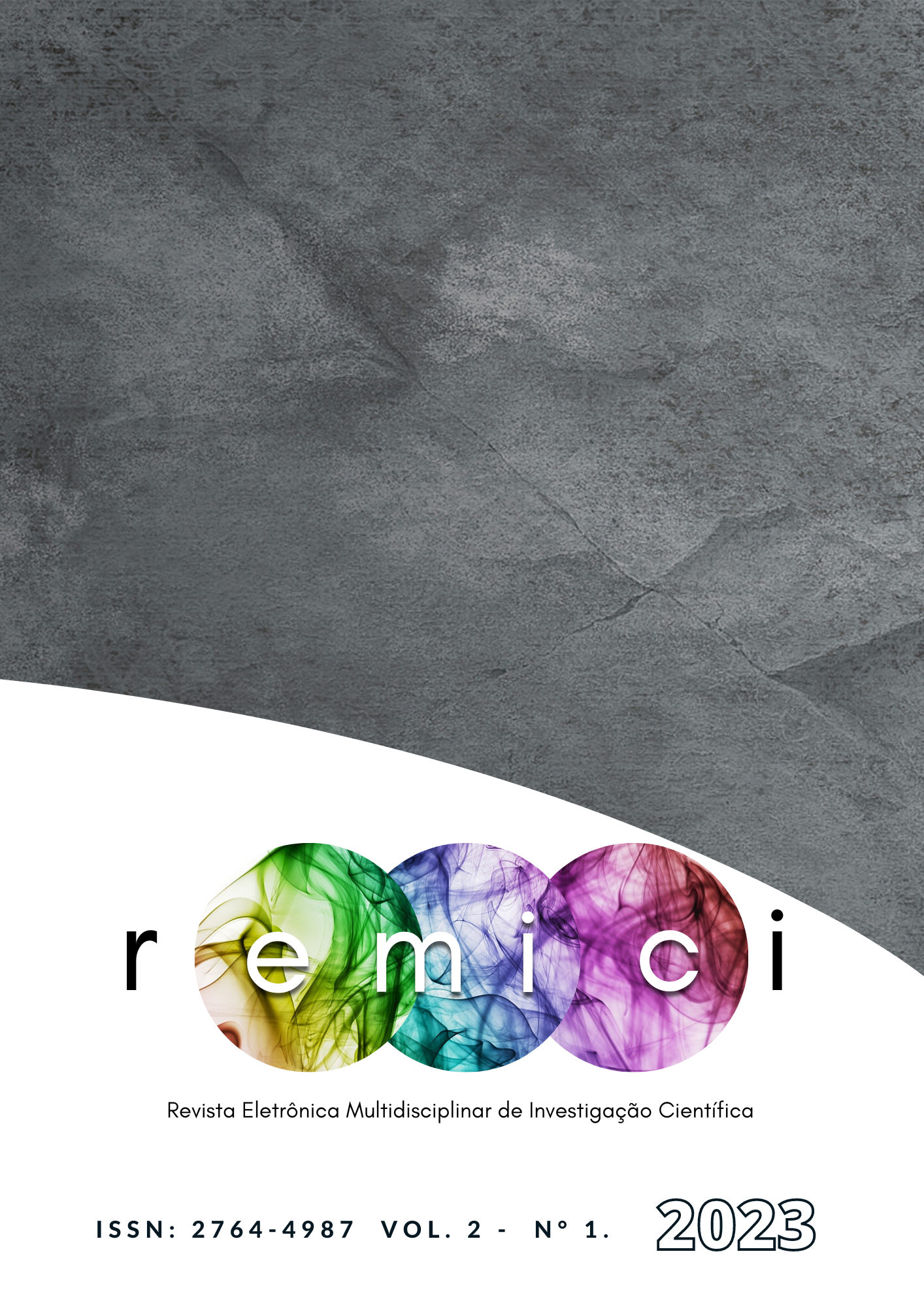CUPPING THERAPY REDUCES LUMBAR PAIN IN YOUNG COLLEGE STUDENTS WHEN APPLIED STATICLY TO TRIGGER POINTS
Main Article Content
Abstract
The aim of this study was to analyze whether the application of cupping therapy reduces low back pain in college students when applied statically to trigger points. A pre- and post-intervention clinical study was carried out at the Physiotherapy school clinic of the UNIFAFIBE Bebedouro-SP University Center, where ten university students of both genders aged between 20 and 25 years, who presented pain in two random trigger points were selected. located in the lumbar region. The university students were submitted to pain assessment using the visual analogue scale and pressure algometer tools. After the evaluation, cupping therapy was applied in eight five-minute sessions at both points simultaneously. After the treatment period, the university students underwent reassessment. The values obtained in this research were tabulated and analyzed by the SPSS software (version 22.0 for Windows) using the t test for paired samples (p≤0.05). The results obtained indicate a reduction in pain in trigger points after eight weeks of application, also contributing to increased blood circulation and tissue oxygenation. In view of the results, this study suggests that the cupping technique promotes a reduction in the pain of trigger points in the lumbar region in young university students.
Article Details

This work is licensed under a Creative Commons Attribution-NonCommercial-ShareAlike 4.0 International License.
References
ALMEIDA, D.C.; KRAYCHETE, D.C. Low back pain – a diagnostic approach. Rev Dor, v. 18, n. 2, p. 173-7, 2017. Disponível em: <https://www.scielo.br/j/rdor/a/9JxZrqLhB7r5y8rKWtXDYXt/?lang=pt>. Acessado em: Jul, 2022.
ALVES, R.G. Ponto gatilho miofascial: histórico e métodos de identificação. 2011. 31p. Monografia. Universidade Federal do Rio Grande do Sul. Porto Alegre. 2011. Disponível em: <https://www.lume.ufrgs.br/handle/10183/40442>. Acessado em: Jul, 2022.
CORRÊA, G.P. et al. Influência da ventosaterapia sobre o limiar de dor a pressão e flexibilidade muscular da cadeia posterior de membro inferior em atletas de futebol. Fisioter. Pesqui., v. 28, n. 3, p. 318-323 2021. Disponível em: <https://www.scielo.br/j/fp/a/5kQbsBM5r5ZQz9kyHt96smJ/#.> Acessado em: Jul, 2022.
GONÇALVES, B.M.; et al. Prevalência da dor lombar na doença de Parkinson. BrJP, v. 3, n. 4, p. 310-3, 2020. Disponível em: <https://www.scielo.br/j/brjp/a/yFZbSTsTGNbq35XfJzcjDDM/?format=pdf&lang=pt>. Acessado em: Jul, 2022.
LATINA, R.; et al. A prevalência de distúrbios musculoesqueléticos e dor lombar entre enfermeiras italianas: um estudo observacional. Acta Biomed, v. 91, n. 12, p. e202000, 2020. Disponível em: <https://www.mattioli1885journals.com/index.php/actabiomedica/article/view/10306>. Acessado em: Jul, 2022.
LIMA, B. G. S. Percepção da melhora da dor utilizando escala visual analógica (EVA) em pacientes com disfunção de articulação temporomandibular tratados com dispositivos interoclusais em uma universidade privada de São Paulo. 2019. 31p. Monografia. UNIP. Porto Alegre. 2019. Disponível em: <https://www.conic-semesp.org.br/anais/files/2018/1000002569.pdf>. Acessado em: Jul, 2022.
MEINTS, S.M.; EDWARDS, R.R. Evaluating psychosocial contributions to chronic pain outcomes. Prog Neuropsychopharmacol Biol Psychiatry, v. 20, n. 87, p. 168-182, 2018. Disponível em: <https://pubmed.ncbi.nlm.nih.gov/29408484/>. Acessado em: Jul, 2022.
MILLS, S.E.E.; NICOLSON, K.P.; SMITH, B.H. Chronic pain: a review of its epidemiology and associated factors in population-based studies. Br J Anaesth, v. 123, n. 2, p. e273-e283, 2019. Disponível em: https://pubmed.ncbi.nlm.nih.gov/31079836/. Acessado em: Jul, 2022.
MOURA, C.C. et al. Cupping therapy and chronic back pain: systematic review and meta-analysis. Rev. Latino-Am. Enfermagem, v. 26, p. e3094, 2018. Disponível em: <https://www.scielo.br/j/rlae/a/wHqRXxHjCC96prj9WCKQshN/?format=pdf&lang=pt>. Acessado em: Jul, 2022.
OLIVEIRA, M.A.R.; SILVA, A.P.; PEREIRA, L.P. Ventosaterapia: uma revisão de literatura. Revista Saúde em Foco. n. 10, p. 151-154, 2018. Disponível em: https://portal.unisepe.com.br/unifia/wpcontent/uploads/sites/10001/2018/06/017_VENTOSATERAPIA_REVIS%C3%83O_DE_LITERATURA.pdf. Acessado em: Jul, 2022.
RESENDE, G.O. et al. Ventosaterapia e acupuntura no tratamento de lombalgia. Ed.UniEvangélica, v. 7, n. 2, p. 22-29, 2019. Disponível em: <http://anais.unievangelica.edu.br/index.php/fisio/article/view/5275/2987>. Acessado em: Jul, 2022.
RIBEIRO, J.C. et al. Ventosaterapia: tratamento alternativo para diversas afecções. Rev Saúde em foco, n.11, p. 1381-1393, 2019. Disponível em: <https://portal.unisepe.com.br/unifia/wp-content/uploads/sites/10001/2019/12/25-ARTIGO-COMPLETO-VENTOSA.pdf>. Acessado em: Jul, 2022.
SALEMI, M.M. et al. Effect of Dry Cupping Therapy on Pain and Functional Disability in Persistent Non-Specific Low Back Pain: A Randomized Controlled Clinical Trial. J Acupunct Meridian Stud, v. 14, n. 6, p. 219-230, 2021. Disponível em: <https://pubmed.ncbi.nlm.nih.gov/35770601/>. Acessado em: Jul, 2022.
SANTOS, E.M.F. O uso da ventosaterapia como recurso fisioterapêutico: Uma revisão integrativa da literatura. 2020. 24p. Monografia. Faculdade Pernambucana de Saúde. Recife. 2020. Disponível em: <https://tcc.fps.edu.br/jspui/handle/fpsrepo/945>. Acessado em: Jul, 2022.
SILVA H.J.A. et al. Dry cupping therapy is not superior to sham cupping to improve clinical outcomes in people with non-specific chronic low back pain: a randomised trial. J Physiother, v. 67, n. 2, p. 132-139, 2021. Disponível em: <https://pubmed.ncbi.nlm.nih.gov/33757719/>. Acessado em: Jul, 2022.
SILVA, G.V.V. Liberação miofascial no tratamento da dor lombar. 2020. 45p. Monografia. Faculdade Maria Milza. Governador Mangabeira. 2020. Disponível em: <http://famamportal.com.br:8082/jspui/handle/123456789/2085>. Acessado em: Jul, 2022.

